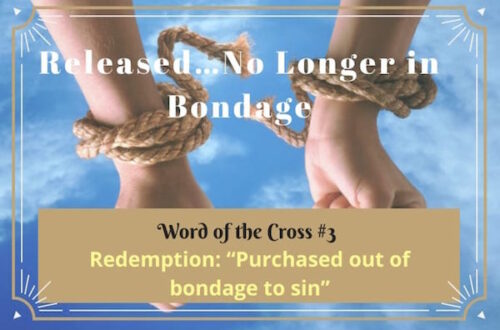Lent: A Primer

Today is “Mardi Gras,” which means “Fat Tuesday.” In many parts of the world, people call Mardi Gras “Pancake Day” or Shrove Tuesday, and they eat stacks of syrup-covered cakes in celebration. Pancake Day is the liturgical polar-opposite of a last-chance workout. Because Ash Wednesday marks the beginning of Lent, people snarf up all the stuff from which they’ll fast for the next forty days. Items included in the traditional “fast” were sugar, butter, flour and eggs—which, if you mix them up, make pancake batter. So, people made pancakes out of the ingredients they needed to use up, and they consumed the resulting “stacks” the day before austerity set in. Voila! The story behind IHOP’s Shrove Tuesday special.
But beyond the party-till-you-drop bead-throw fest in “Nawlins,” masks and costumes for Carnevale in Venice (in years the flu has not shut it all down), and short or full stacks with maple syrup, what follows has spiritual significance.
As tomorrow, Ash Wednesday, marks the beginning of Lent, we enter the forty-day season leading up to Easter. On Ash Wednesday participants who attend special church services receive ashes on their foreheads. The Bible’s authors often connect ashes with repentance and grief, so congregants are marked with ashes as a reminder that from dust we came and to dust we shall return—not in some morbid zombie ritual but because remembering the brevity of life and our mortality can help us live more holy lives.
Lent: The Origin
Long before the Eastern and Western Church split and long, long before the Protestant Reformation, the cloud of witnesses who preceded us in Christ observed a season marked out for penance leading up to Easter (similar to the intent of Advent leading up to Christmas). The word “Lent” has Anglo-Saxon roots. Lencten means “spring,” as in the season following winter, and lenctentid literally means both “springtide” and “March,” the month in which most of Lent falls.
Lent has its origins perhaps as far back as the disciples. The apostle John probably mentored Polycarp, who discipled Irenaeus, who died in AD 203. Eusebius quotes Irenaeus’s mention of Lent in an epistle he wrote to the pope, Victor I: “The dispute is not only about the day, but also about the actual character of the fast. Some think that they ought to fast for one day, some for two, others for still more; some make their ‘day’ last 40 hours on end. Such variation in the observance did not originate in our own day, but very much earlier, in the time of our forefathers” (cited in Eusebius’s History of the Church, V, 24). Clearly, controversies about Lent are about as old as the practice. Nevertheless, why not keep the baby as we throw out the old bathwater?
At its best, Lent is a season of penance, prayer, and self-denial during which Christ-followers observe forty days of reflection and repentance. The forty days commence on Ash Wednesday and end at sunrise on Easter morning—followed by waffles. Chocolate bunnies. Candy. Eggs. Plus trumpets and loud singing.
The point of Lent is not to prove to anyone, including ourselves, that we can deny ourselves and therefore strut. Rather, the reason some give up chocolate or eggs or meat or new purchases or sugar or social media is to constantly remind our flesh that the Son of God gave up everything for us. And with the absence of such luxuries or distractions, we can better contemplate dying to self. In the words of the late Keith Green, “Jesus rose from the dead; [we] can’t even get out of bed.” It’s this flesh-driven mentality against which we wage war in our Lenten observances.
Some of us grew up in traditions that connected Lent with legalism. So, we tend to connect the season with license and legalism. I’ve seen people who plan to give up alcohol get falling-down drunk on Mardi Gras. And the next day everyone asks, “What are you giving up for Lent?”
Subtracting or Adding?
But Lent does not have to be about gorging and purging. It doesn’t even have to involve giving up something. The forty days might involve adding something, such as extended periods of prayer and meditation culminating in a silent retreat. Or reading the entire Bible. But it might also involve both “taking off” and “putting on.”
As my friend Ruth Haley Barton says, “The real question of the Lenten season is how will I clear out the junk and garbage in my life so that I can be restored to God in some fresh way? What are the disciplines that will open up space for God to create a clean heart and new spirit in me?”
Such clearing out and space-opening are worthy goals, regardless of our denominational affiliation. So for those wishing to participate in Lent this year, I offer some how-to’s:
- Pray and ask God, “Search me and know my heart; test me and know my anxious thoughts. See if there is any offensive way in me, and lead me in the way everlasting” (Psalm 139:23–4).
- Ask yourself, “What non-essentials eat up my time and distract me from what matters?” Shopping? Overeating? Mocha latte with whipped cream? Twitter? Binge-watching Jack Ryan? Hours spent daily on the smart phone? Prayerfully determine what, with the help of the Spirit, you will add and and/or give up for forty days.
- Determine, with the Spirit’s help, to use any freed-up time and/or money for something meaningful. Give to the poor. Exchange wasted time for prayer, meditation, or Scripture memorization. Do some reflective reading. One year my friend gave up listening to the radio on her way to work and instead played a CD of the Bible.
- Reflect. Check out the “Lent” section in the Book of Common Prayer and follow the meditations leading up to and including Holy Week.
- Consider trying a new spiritual habit. Fasting on Wednesdays? Spending an hour in prayer every weekend? Observing half-days of silence?
- Take on a new practice. Send 40 encouraging notes. Or post 40 Instagram photos relating to #Lent. Or collect 40 jars of food to donate.
- Spend a day volunteering at a homeless shelter, soup kitchen, food pantry or assisted living center. Thank God for Christ descending from the palaces of heaven to the dusty streets of Nazareth.
- Go 40 entire days without making one political comment. Replace those comments with grace-filled words.
- Get some friends together and read a book like Richard Foster’s classic, A Celebration of Discipline.
I commend to you the Ash Wednesday sermons of seventeenth-century British bishop Lancelot Andrewes. A contemporary of Shakespeare, the brilliant bishop left us a library of great writings, some of which influenced T. S. Eliot to convert to Christianity. Here’s a prayer Rev. Andrewes wrote that’s fitting for the season:
Pleading
O remember what my substance is; that I am:
dust and ashes, grass and a flower,
flesh and a wind that passeth away,
corruption and a worm,
like a stranger and a sojourner,
dwelling in a house of clay,
days few and evil, today and not tomorrow,
in the morning and not so long as till evening,
now and not presently,
in a body of death,
in a world of corruption,
lying in wickedness.
Remember this.
Should we feel led to observe Lent, whatever we do, we must draw as little attention to ourselves as possible. In the words of our Lord, “When you pray, go into your room, close the door and pray to your Father, who is unseen. Then your Father, who sees what is done in secret, will reward you” (Matt. 6:6).
If we end up feeling smug or perceiving ourselves as super spiritual, we have missed the point of Lent. We must have the exact opposite focus: humbling ourselves, searching our hearts, and seeking to follow fully after the one who willingly laid down his life as a ransom for us all.




